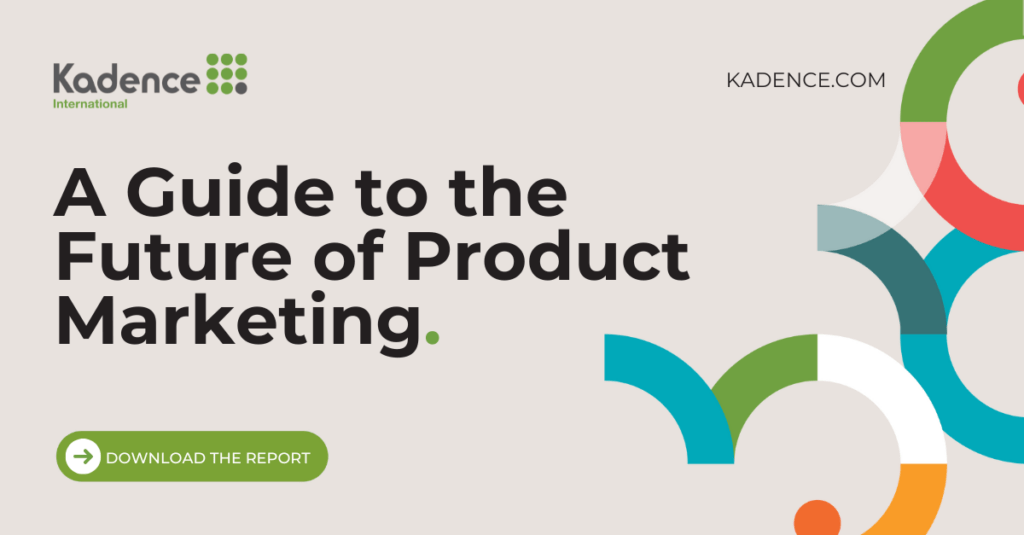In today’s rapidly evolving market landscape, understanding consumer attitudes and experiences is crucial for brands to stay competitive. Traditional surveys provide valuable insights but often capture only a snapshot in time, limiting our understanding of how consumer opinions change and evolve. That’s where panel surveys step in, offering a more dynamic and comprehensive approach to market research.
Panel surveys, conducted over a predetermined period, provide a three-dimensional picture of consumer behavior by capturing changes in attitudes, opinions, and behaviors over time. Unlike one-time surveys, panel surveys track the evolution of consumer sentiments, allowing businesses to make data-driven decisions that align with changing customer preferences.
In this blog post, we will delve into the power of panel surveys and how they can refine marketing strategies, improve existing products, and even guide the launch of new products. By adopting panel surveys, businesses gain a deeper understanding of their target audience, enabling them to adapt and respond effectively to evolving consumer needs.
Understanding Panel Surveys
What is a Panel Survey?
Panel surveys are market research studies designed to understand consumer opinions and behaviors over time or at a specific moment. Unlike traditional surveys that provide a static snapshot, panel surveys offer a longitudinal approach, allowing researchers to capture the evolution of attitudes and experiences within a target population.
The primary goal of panel surveys is to collect both quantitative and qualitative information that reflects how the attitudes of the target population change over time. For example, a company may use a panel survey to evaluate the success of ongoing efforts to improve customer service or to track shifts in customer opinions about pricing strategies.
It’s essential to distinguish panel surveys from survey panels. While panel surveys refer to the type of survey being conducted, survey panels are a large group of consumers who have opted in or been invited to participate in various market research activities on an ongoing basis. Panel surveys draw insights from survey panels to gather data and analyze consumer trends.
Why Use a Panel Survey?
While traditional surveys provide valuable insights into consumer preferences at a specific point in time, panel surveys offer several advantages that make them a useful tool for market researchers:
- Tracking Changes Over Time: Panel surveys allow researchers to observe how consumer attitudes and behaviors evolve over a predetermined period. This longitudinal approach provides a deeper understanding of trends, enabling businesses to adapt their strategies accordingly.
- Refining Marketing Strategies: By collecting data over time, panel surveys enable businesses to refine their marketing strategies based on consumer feedback. Insights gained from panel surveys can inform decisions on pricing, product positioning, and advertising campaigns.
- Evaluating Product Improvement: Panel surveys offer a unique opportunity to assess the impact of product improvements or updates. By gathering feedback from panelists at different stages of product usage, businesses can identify areas for improvement and address consumer concerns proactively.
- Understanding External Factors: Panel surveys provide valuable insights into how external factors, such as COVID-19, inflation, or changes in employment rates, influence consumer behaviors. This understanding helps businesses adjust their strategies and adapt to changing market conditions.
- Assessing Customer Satisfaction and Loyalty: Businesses can measure customer satisfaction and gauge loyalty over time by conducting panel surveys. This ongoing feedback loop helps identify areas where customer experiences can be enhanced and build stronger customer relationships.
It is worth noting that panel surveys are particularly effective in capturing the nuances of consumer experiences and preferences, which one-time surveys may not fully capture.
Advantages and Disadvantages of Panel Surveys
Panel surveys offer numerous advantages, making them a valuable tool for market researchers seeking in-depth insights into consumer attitudes and behaviors. However, it’s also important to be aware of the potential drawbacks associated with panel surveys. Let’s explore both the advantages and disadvantages.
Advantages of Panel Surveys:
- High-Quality Data at Scale: Panel surveys allow researchers to collect high-quality data from a large number of respondents over an extended period. This robust dataset provides a comprehensive understanding of consumer attitudes, preferences, and behaviors, enabling businesses to make informed decisions.
- Longitudinal Insights: By surveying the same panelists over time, panel surveys offer a unique opportunity to observe changes and trends in consumer opinions and behaviors. This longitudinal approach provides deeper insights into the dynamics of consumer decision-making processes.
- Cost-Effectiveness and Efficiency: Panel surveys are cost-effective and efficient compared to in-person or mail surveys. With advancements in technology, panelists can easily access questionnaires online or via dedicated apps, completing them at their convenience. Instant results and automated data processing save time and resources.
- Flexibility in Research Design: Panel surveys allow researchers to design surveys tailored to specific research objectives. Whether tracking customer satisfaction, evaluating brand perception, or testing new product concepts, panel surveys offer flexibility in gathering the necessary data.
Disadvantages of Panel Surveys:
- Limited Representation: Panel surveys conducted online may face limitations in reaching populations with minimal internet penetration. This can result in incomplete representation and potential biases in the data. Ensuring diverse and representative panel compositions becomes crucial to mitigate this limitation.
- Potential for Fraud and Data Quality Issues: Panel surveys are vulnerable to fraudulent or lazy panelists who provide inaccurate or incomplete responses, compromising data quality. Employing robust anti-fraud measures, such as advanced algorithms and validation techniques, helps ensure the integrity of panel survey data.
- Panel Conditioning: Over time, panelists may develop familiarity with survey questions and adjust their responses based on previous answers, leading to panel conditioning. This phenomenon can introduce biases and affect the accuracy of longitudinal data. Careful survey design and periodic introduction of new questions can help mitigate panel conditioning effects.
- Ethical Considerations and Privacy: Panel surveys involve handling personal data and require adherence to ethical principles and data protection regulations. Safeguarding respondents’ privacy, obtaining informed consent, and implementing secure data storage and transmission practices are essential to maintain ethical standards.
Researchers can harness their strengths while mitigating potential challenges by understanding the advantages and disadvantages of panel surveys. Implementing best practices and employing quality control measures ensures reliable and valuable insights from panel survey data.
Tips and Best Practices for Panel Surveys
To conduct a successful panel survey that yields reliable and insightful data, following best practices and implementing effective strategies is essential. Here are some practical tips to ensure data quality, minimize biases, and optimize the overall panel survey experience:
Survey Design:
- Keep surveys concise: Aim for a survey length of 10-15 minutes or less to maintain respondent engagement and minimize survey fatigue.
- Use clear and simple language: Frame questions in a way that is easy to understand, avoiding jargon or technical terms that may confuse respondents.
- Include a mix of question types: Incorporate a variety of question formats such as multiple choice, rating scales, and open-ended questions to gather both quantitative and qualitative insights.
Pre-testing and Pilot Surveys:
- Conduct pre-testing: Before launching the panel survey, conduct small-scale pilot surveys to identify potential issues or areas of improvement in the questionnaire. This helps ensure the clarity and coherence of the survey instrument.
- Seek external feedback: Involve colleagues or unbiased individuals who can provide objective feedback on the survey design, question flow, and overall user experience.
Respondent Recruitment and Engagement:
- Ensure diverse panel composition: Strive for diversity within the panel to represent the target population accurately. This helps minimize biases and ensures a comprehensive understanding of consumer attitudes and behaviors.
- Establish clear expectations: Communicate the survey frequency, duration, and incentives to panelists upfront to manage their expectations and maintain engagement.
- Foster a relationship with panelists: Regularly engage with them through newsletters, updates, or targeted communications to establish a sense of community and maintain their interest and commitment.
Data Quality Assurance:
- Implement fraud detection measures: Utilize anti-fraud software and algorithms to identify and filter out fraudulent responses or suspicious activities.
- Monitor and address panel conditioning: Regularly review survey responses for potential panel conditioning effects. Introduce new questions or rotate existing ones to minimize bias caused by repeated exposure to the same survey items.
Privacy and Ethical Considerations:
- Obtain informed consent: Communicate the purpose of the panel survey, how the data will be used, and the privacy measures in place. Ensure panelists provide informed consent to participate.
- Adhere to data protection regulations: Comply with relevant data protection laws and regulations, such as GDPR or CCPA, to safeguard respondents’ personal information and ensure secure data storage and transmission.
By following these best practices, researchers can enhance the overall quality and reliability of panel survey data, enabling accurate analysis and actionable insights.
Enhancing Insights: Combining Panel Surveys with Other Research Methods
While panel surveys provide valuable longitudinal data, combining them with other research methods can enrich the understanding of consumer behavior and enhance the depth of insights. Here are some ways to integrate panel surveys with complementary research approaches:
Qualitative Research Methods:
- Focus Groups: Conducting focus groups alongside panel surveys allows for an in-depth exploration of consumer perceptions, motivations, and preferences. These qualitative discussions provide context and a deeper understanding of the quantitative data gathered through panel surveys.
- Interviews: Individual interviews, whether in-person or through digital platforms, offer an opportunity to delve deeper into specific topics or explore emerging trends. Interviews can capture nuanced insights that may not be easily obtained through surveys alone.
Behavioral Tracking:
- Digital Tracking: By leveraging technology, researchers can collect behavioral data passively, such as website interactions, app usage, or purchase behavior. Combining panel survey responses with behavioral tracking data provides a comprehensive view of consumer actions and preferences.
- Social Media Monitoring: Analyzing social media conversations and sentiment alongside panel survey data allows for real-time understanding of consumer opinions and trends. This combination helps capture immediate reactions and identify emerging patterns.
Experimental Research:
- A/B Testing: Pairing panel surveys with A/B testing allows businesses to test different variations of a product or marketing strategy and measure the impact on consumer attitudes and behaviors. Panel survey data provides insights into how these variations affect consumer preferences over time.
- Concept Testing: Integrating panel surveys with concept testing methodologies helps evaluate new product ideas, advertisements, or branding strategies. The panel survey data provides quantitative feedback on consumer reactions and preferences, supporting informed decision-making.
Data Integration and Analysis:
- Mixed Methods Approach: Integrating quantitative data from panel surveys with qualitative insights from other research methods provides a comprehensive understanding of consumer behavior. By triangulating data sources, researchers can identify patterns, validate findings, and better understand the why behind consumer actions.
- Advanced Analytics: Leveraging data analytics techniques such as segmentation, predictive modeling, or clustering alongside panel survey data enhances the identification of consumer segments, market trends, and future behaviors.
By combining panel surveys with other research methods, brands can gain a more holistic understanding of consumer behavior. These integrated approaches provide a multi-dimensional view, enriching insights and enabling more effective decision-making.
Ensuring Data Quality and Minimizing Biases in Panel Surveys
Maintaining data quality and minimizing biases are critical aspects of conducting panel surveys. To ensure the integrity and reliability of research findings, researchers must implement rigorous quality control measures. Here are some tips and best practices:
Sample Representativeness:
- Strive for a diverse panel: Ensure that the panel composition reflects the target population’s characteristics to avoid skewed results. Consider age, gender, ethnicity, geographic location, and socioeconomic background.
- Regularly assess panel composition: Periodically review the demographics of the panel to identify any shifts or imbalances. Adjust recruitment strategies as necessary to maintain a representative sample.
Survey Design and Administration:
- Randomize question order: Randomizing the order of survey questions helps minimize order bias, where the sequence of questions influences responses.
- Monitor survey length: Lengthy surveys can lead to respondent fatigue and may result in incomplete or inaccurate responses. Keep surveys concise and engaging to maintain respondent interest and data quality.
- Use validated scales and measures: Utilize established and validated scales and measurement tools to ensure the reliability and validity of the survey instrument.
Data Validation and Cleaning:
- Employ data validation checks: Implement automated checks to identify inconsistent or illogical responses. This helps identify and rectify data entry errors or fraudulent submissions.
- Cleanse and filter data: Remove outliers, duplicate entries, or responses that exhibit suspicious patterns. Thoroughly review data to ensure its accuracy and reliability.
Minimizing Nonresponse Bias:
- Monitor response rates: Track response rates and analyze any differences in characteristics between respondents and non-respondents. Adjust recruitment strategies or incentives to mitigate nonresponse bias.
- Nonresponse weighting: Apply weighting techniques to adjust for potential biases caused by differential response rates among demographic groups. This helps ensure that the sample accurately represents the target population.
Ethical Considerations and Privacy:
- Obtain informed consent: Clearly communicate the purpose of the survey, how the data will be used, and the privacy measures in place. Obtain informed consent from panelists before their participation.
- Protect respondent anonymity: Ensure that respondents’ personal information remains confidential and is not disclosed in any reports or analyses. Use unique identifiers instead of personal identifiers to maintain anonymity.
By implementing these measures, researchers can enhance panel surveys’ data quality, validity, and reliability. Maintaining rigorous data
Ethical Considerations and Privacy in Panel Surveys
Ethics and privacy play a vital role in panel surveys and market research. Respecting respondents’ rights and ensuring data privacy is essential for maintaining trust and integrity in the research process. Here are some key considerations to uphold ethical standards:
Informed Consent:
- Obtain informed consent: Clearly explain the purpose of the panel survey, how the data will be used, and any potential risks or benefits to participants. Obtain explicit consent from panelists before their participation, ensuring they understand their rights and can make an informed decision.
Data Privacy and Security:
- Safeguard personal information: Collect and handle personal data in compliance with applicable data protection laws and regulations. Implement robust security measures to protect data from unauthorized access, loss, or misuse.
- Anonymize data: Remove personally identifiable information from collected data to maintain respondent privacy. Use unique identifiers instead of personal identifiers whenever possible.
Transparency and Accountability:
- Communicate research objectives and procedures: Clearly explain the panel survey’s purpose, methodology, and expected outcomes to participants. Be transparent about the potential uses of the data and assure respondents of confidentiality.
- Respect participant autonomy: Allow panelists to withdraw their participation at any time without repercussions. Honor their decisions and provide mechanisms for opting out or managing their involvement in the panel.
Minimizing Harm and Bias:
- Mitigate potential biases: Take measures to minimize biases in survey design and data collection, such as randomizing question order, using balanced response scales, and addressing potential sources of bias.
- Do no harm: Ensure that the panel survey and subsequent analyses do not cause harm or distress to participants. Prioritize the well-being and dignity of respondents throughout the research process.
Adhering to ethical principles is crucial to meet legal requirements and fostering trust with panelists and the broader public. Upholding high ethical standards promotes the credibility and reliability of market research findings, benefiting both businesses and respondents.
Panel surveys offer valuable insights into consumer attitudes and behaviors over time. By combining panel surveys with other research methods, brands can comprehensively understand consumer behavior. However, it is imperative to maintain data quality, minimize biases, and uphold ethical standards throughout the entire research process.
By following best practices, conducting rigorous quality control, and respecting privacy and ethical considerations, researchers can harness the power of panel surveys to make informed decisions, refine marketing strategies, and improve products and services.
As market researchers, we are responsible for conducting panel surveys with integrity, transparency, and respect for participants. By doing so, we can build a foundation of trust and ensure the continued success of panel surveys as a valuable tool for understanding and adapting to evolving consumer preferences and behaviors.
If you’re ready to unlock the full potential of panel surveys, Kadence International, a global market research agency, is here to assist you in designing, implementing, and analyzing your panel surveys. Contact us today to embark on your journey of comprehensive consumer insights.
Remember, the key to unlocking the dynamic, three-dimensional picture of consumer behavior lies within the power of panel surveys.
Get regular insights
Keep up to date with the latest insights from our research as well as all our company news in our free monthly newsletter.





 Senior Marketing Executive
Senior Marketing Executive Sales & Marketing
Sales & Marketing General Manager PR -Internal Communications & Government Affairs
General Manager PR -Internal Communications & Government Affairs Vital Strategies
Vital Strategies
 Customer Intelligence Director
Customer Intelligence Director